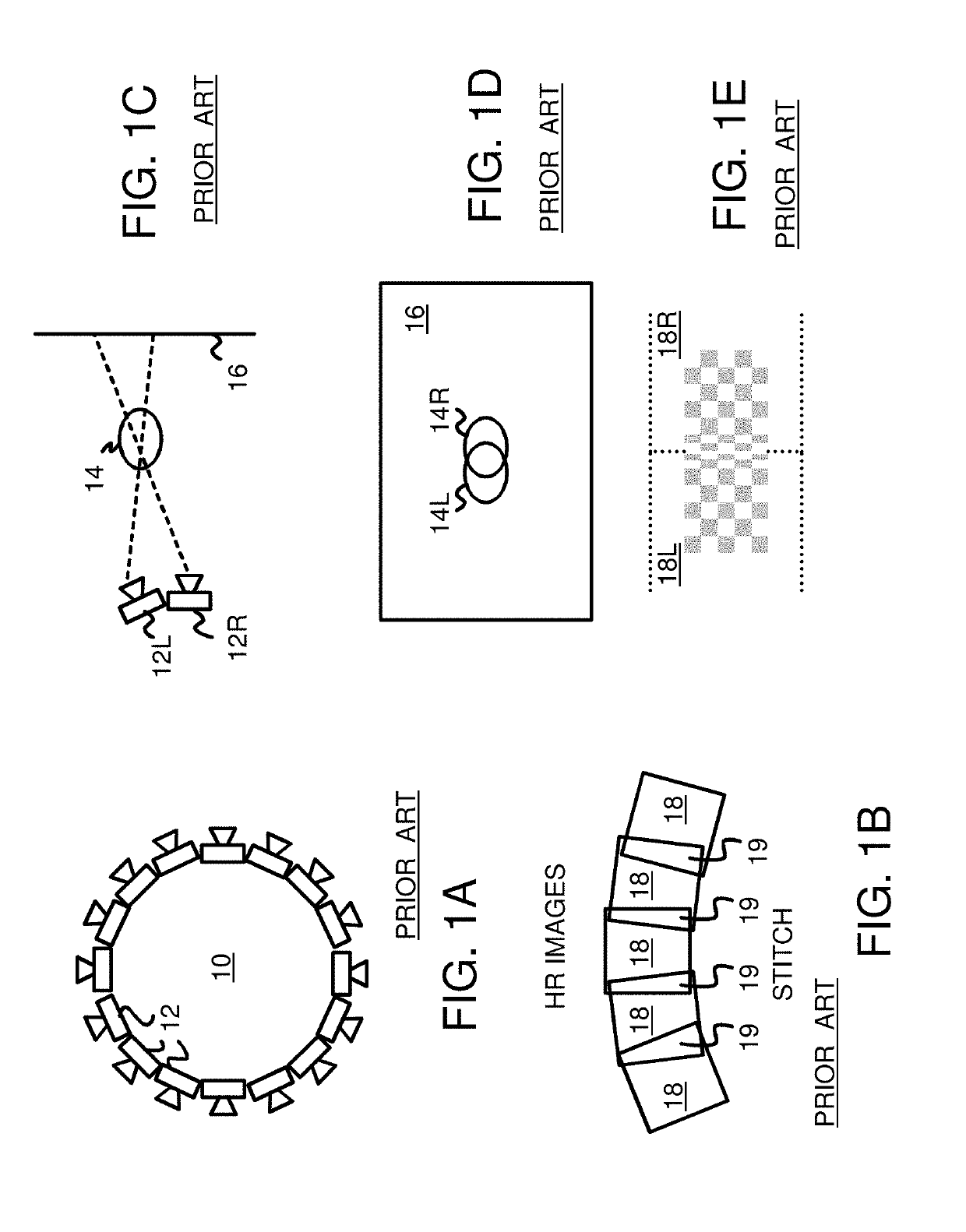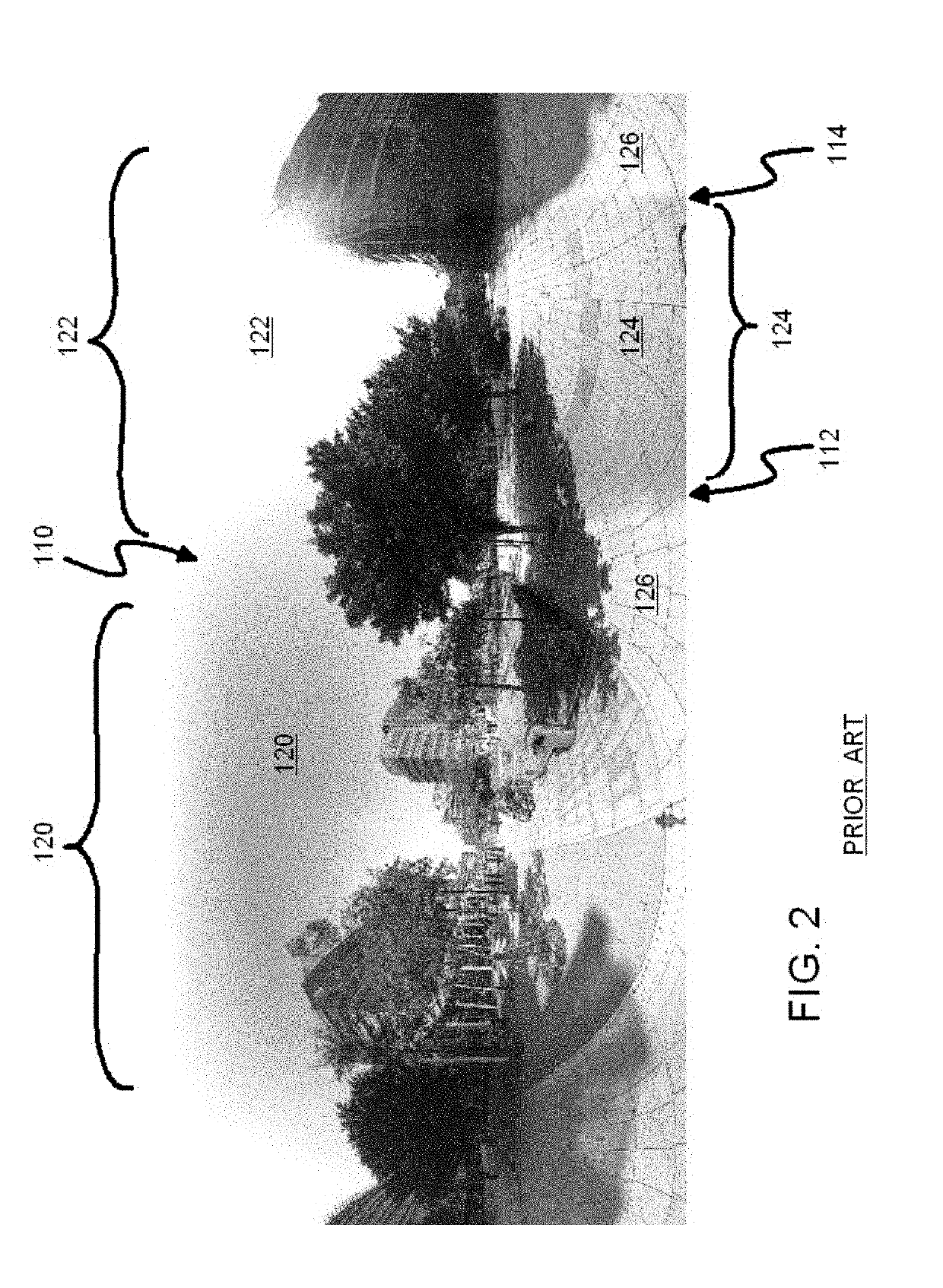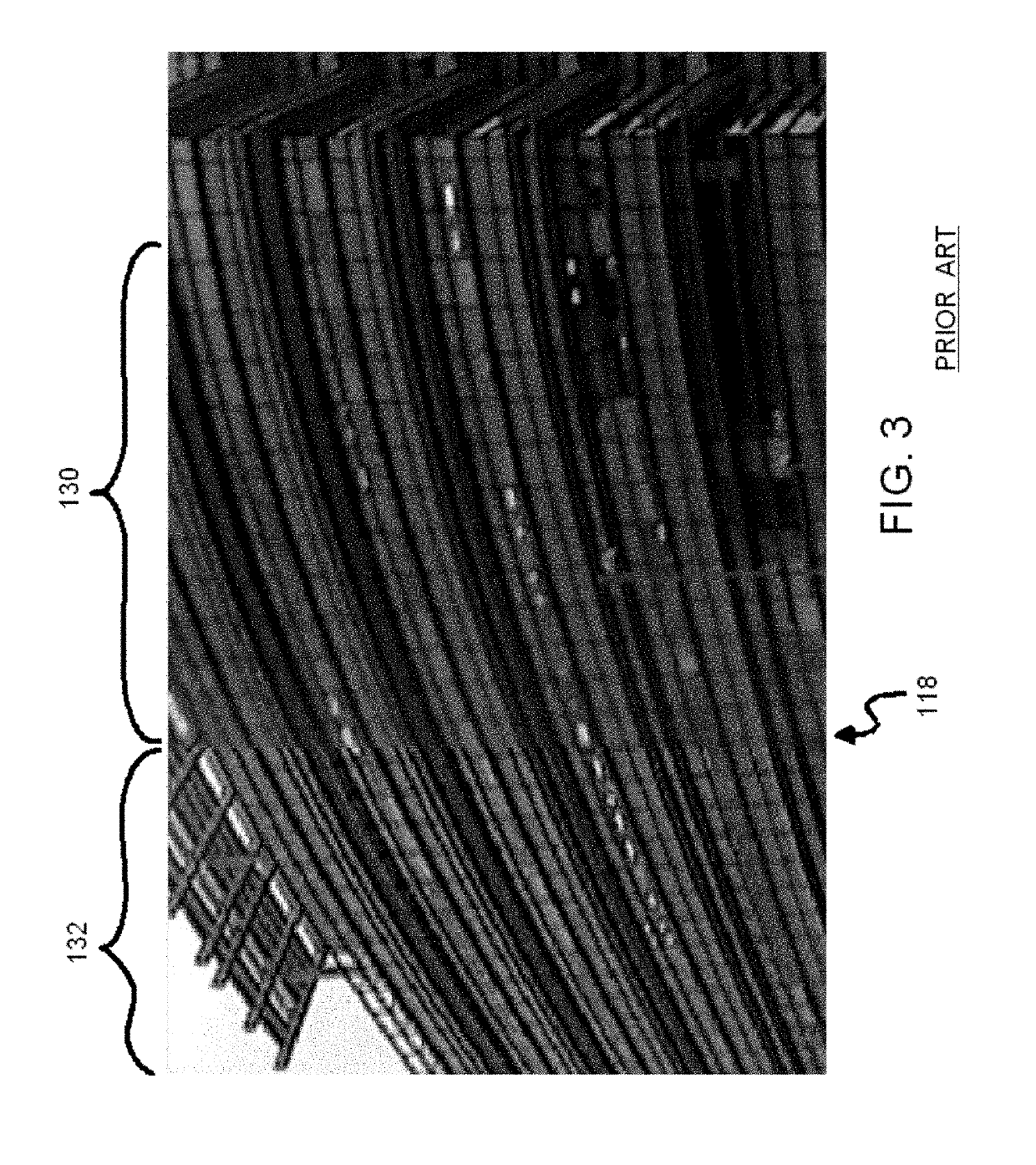Method for High-Quality Panorama Generation with Color, Luminance, and Sharpness Balancing
a high-quality, panorama technology, applied in the field of virtual reality (vr) panorama generation, can solve the problems of inexact depth estimation, image artifacts, and inability to accurately estimate the depth of the image,
- Summary
- Abstract
- Description
- Claims
- Application Information
AI Technical Summary
Benefits of technology
Problems solved by technology
Method used
Image
Examples
Embodiment Construction
[0045]The present invention relates to an improvement in stitched image correction. The following description is presented to enable one of ordinary skill in the art to make and use the invention as provided in the context of a particular application and its requirements. Various modifications to the preferred embodiment will be apparent to those with skill in the art, and the general principles defined herein may be applied to other embodiments. Therefore, the present invention is not intended to be limited to the particular embodiments shown and described, but is to be accorded the widest scope consistent with the principles and novel features herein disclosed.
[0046]FIG. 7 is an overall flowchart of a color and sharpness balancing method for stitching images during panorama generation. Images are captured by a panorama camera that aligns adjacent images to overlap slightly. The images from the panorama camera are loaded, step 210, and converted to YUV format if in another format, ...
PUM
 Login to View More
Login to View More Abstract
Description
Claims
Application Information
 Login to View More
Login to View More - R&D
- Intellectual Property
- Life Sciences
- Materials
- Tech Scout
- Unparalleled Data Quality
- Higher Quality Content
- 60% Fewer Hallucinations
Browse by: Latest US Patents, China's latest patents, Technical Efficacy Thesaurus, Application Domain, Technology Topic, Popular Technical Reports.
© 2025 PatSnap. All rights reserved.Legal|Privacy policy|Modern Slavery Act Transparency Statement|Sitemap|About US| Contact US: help@patsnap.com



